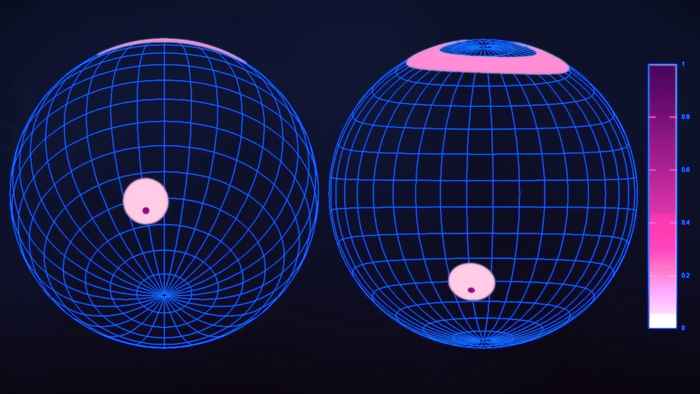Nearest millisecond pulsar has radius of 11.4 kilometers and is 1.4x as heavy as the sun
11 July 2024

PSR J0437 is a pulsar, a rotating neutron star that emits electromagnetic radiation. It is located about 510 light-years from Earth in the southern constellation of Pictor. PSR J0437 rotates 174 times per second around its axis and has a white dwarf companion. Like an out of control lighthouse, the pulsar sends a beam of radio waves and X-rays toward Earth every 5.75 milliseconds. This makes it the closest millisecond pulsar to Earth. It is also, in part because it is so close, the brightest millisecond pulsar. And it is a more stable clock than man-made atomic clocks.
Dutch national supercomputer
For their research, the scientists used data from the NICER X-ray telescope aboard the ISS. They combined the X-ray data with a technique called pulse profile modeling. To do this, they computed complex statistical models on the Dutch national supercomputer Snellius. In the end, they were able to calculate the star's radius, with the help of mass measurements made by Daniel Reardon (Swinburne University of Technology, Australia) and colleagues at the Parkes Pulsar Timing Array. They also mapped the temperature distribution of the magnetic poles.
Principal investigator Devarshi Choudhury (University of Amsterdam, the Netherlands) is pleased with the measurements: "Before, we were hoping to be able to calculate the radius accurately. And it would be great if we could show that the hot magnetic poles are not directly opposite each other on the stellar surface And we just managed to do both!"
Maximum weight
The researchers report that the new measurements indicate a "softer equation of state" than previously thought. By that, they mean that the maximum mass of neutron stars must be lower than some theories predict. "And that, in turn, fits nicely with what observations of gravitational waves seem to suggest," said co-author and neutron star expert Anna Watts (University of Amsterdam).
Scientific papers
A nicer view of the nearest and brightest millisecond pulsar: PSR J0437−4715. By: Devarshi Choudhury, Tuomo Salmi, Serena Vinciguerra, Thomas E. Riley, Yves Kini, Anna L. Watts, Bas Dorsman, Slavko Bogdanov, Sebastien Guillot, Paul S. Ray, Daniel J. Reardon, Ronald A. Remillard, Anna V. Bilous, Daniela Huppenkothen, James M. Lattimer, Zaven Arzoumanian, Keith C. Gendreau, Sharon M. Morsink, & Wynn C.G. Ho. Accepted for publication in The Astrophysical Journal Letters. [original (when published) | preprint: <link>]
The paper by Devarshi Choudhury and colleagues is part of a series of papers on millisecond pulsars. Among others, there is a forthcoming publication on an update to the radius measurement for the heavy pulsar PSR J0740+6620 led by Tuomo Salmi (University of Amsterdam), one on the equation of state by Nathan Rutherford (University of New Hampshire, USA), and one on mass determination by Daniel Reardon (Swinburne University of Technology, Australia). In addition, a paper on the mass and radius of PSR J0030 by Serena Vinciguerra (University of Amsterdam) appeared in early 2024.
Research Funding
Choudhury's research was partly funded by an ERC grant given to Anna Watts. Computing time on the national supercomputer Snellius was funded by a grant from NWO.